-
Car Reviews
- All reviews
- Midsize SUVs
- Small cars
- Utes
- Small SUVs
- Large SUVs
- Large cars
- Sports SUVs
- Sports cars
- Vans
Latest reviews
- Car News
-
Car Comparisons
Latest comparisons
- Chasing Deals
Indian-sourced compact crossover brings funky styling to Suzuki’s local line-up, but it comes up short in a number of key areas
With Suzuki’s local line-up slowly frittering away after Australian Design Rules halted import of key models – Jimny three-door, S Cross, Vitara, Swift Sport – back in March 2025, a slew of newer, ADR-compliant models are rolling out into the brand’s local showrooms.
The latest is the “all-new Fronx hybrid”, a funky-styled, sub-four-metre-long “new-genre SUV” with a coupe-style crossover form that’s sourced from India. It’ll be followed by hybrid and electric (revised) Vitaras through to 2026.
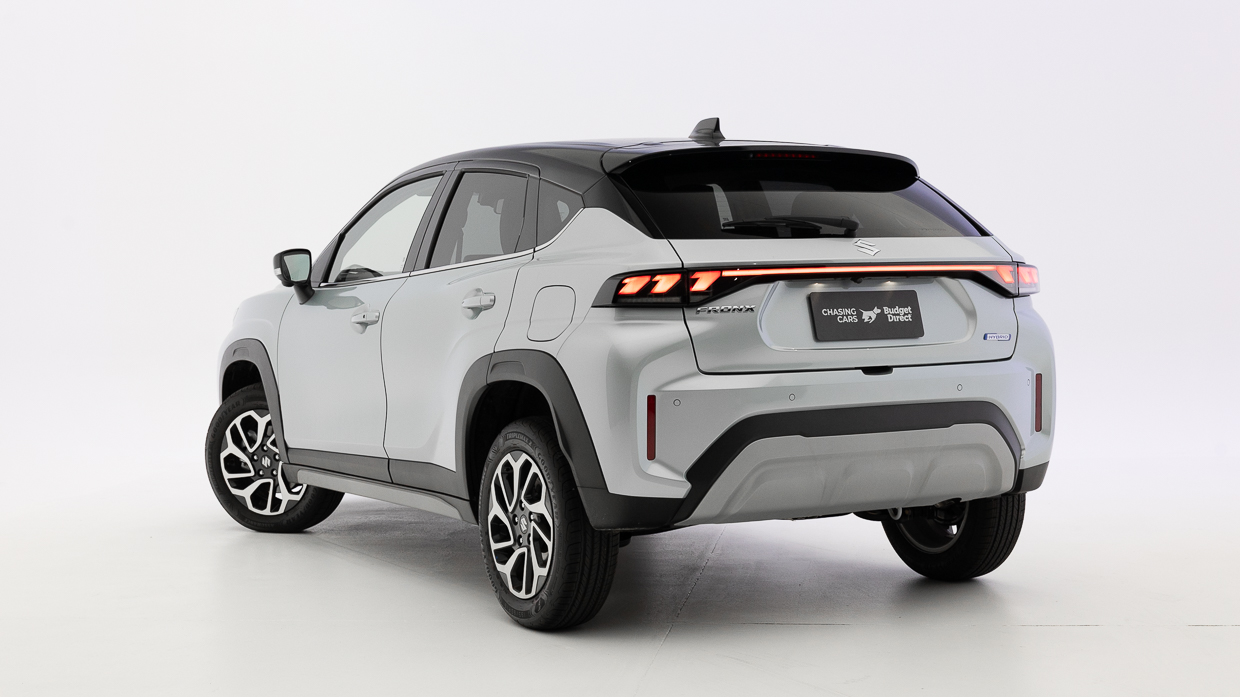
Launched in its homeland in 2023 and badge-engineered as a Toyota Urban Cruiser Taisor (in India) and Starlet Cross (in South Africa), the Fronx – derived from ‘frontier’ and ‘crossover’ – arrives Down Under in a single trim level formally priced from $28,990 list.
It’s expected to launch in September with a circa-$30K driveaway introductory offer.
With its crosshairs firmly aimed at the likes of Mazda CX-3 and Toyota Yaris Cross – rather than compact price-busters such Mahindra XUV3XO and Chery Tiggo 4 – the Fronx fronts up with a semi-premium spin backed by the promise of “next-generation hybrid technology” and “standout driving performance.”
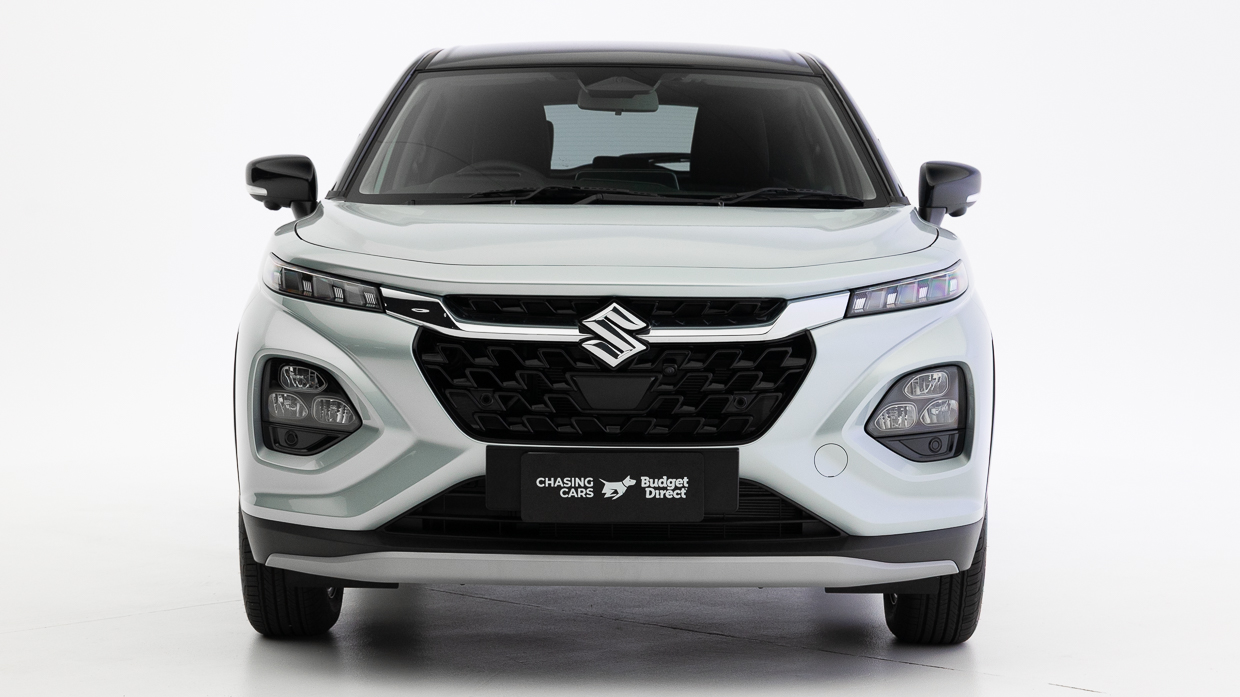
Technically, the Fronx is an SUV-extropolation of the Baleno hatchback – so not exactly all-new – built off a common Heartect B architecture. Suspension is struts up front with a torsion beam rear.
Powertrain of choice is a naturally aspirated 1.5-litre petrol four with the Smart Hybrid System by Suzuki (SHVS) 12-volt application that uses an integrated starter generator (ISG), with outputs of 76kW and 137Nm combined. A one-litre turbocharged triple offered overseas isn’t yet slated for local release.
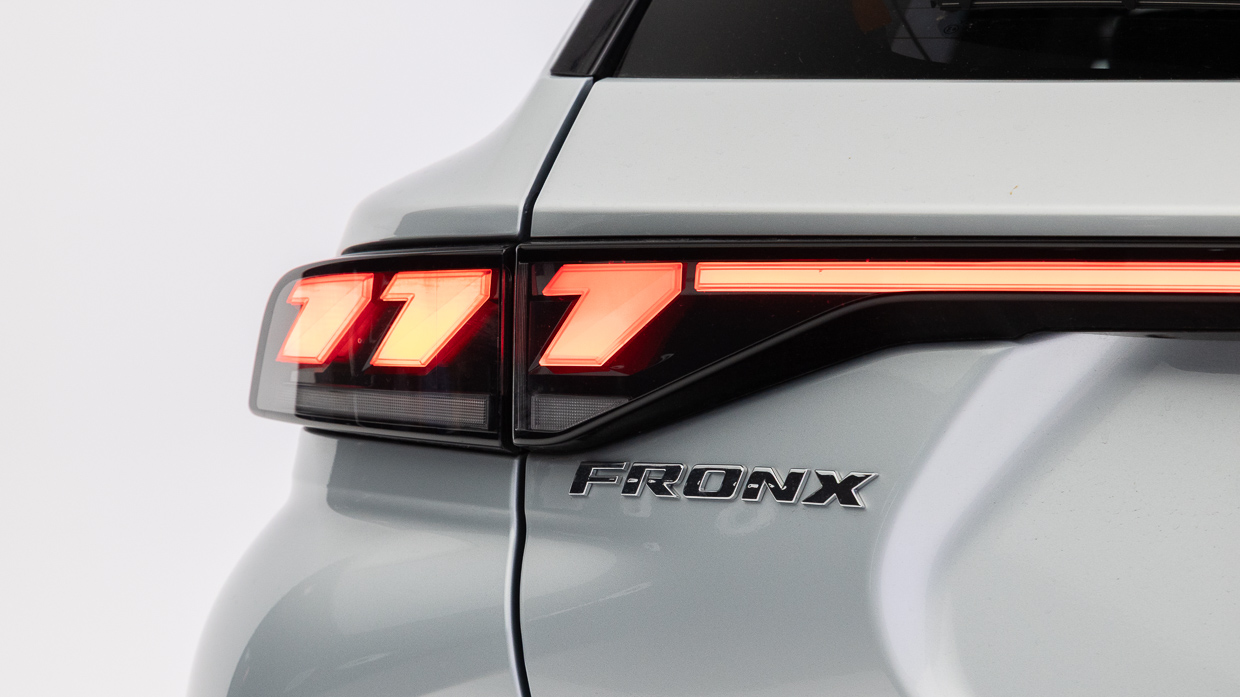
The front-driver fits a six-speed torque converter auto, with a promise of thrifty 4.9L/100km fuel consumption. It’s a combination that, on paper, appears glove fit for Your First Car or a price-busting urban runabout, which is exactly where options in its compact crossover segment are pitched.
Good value? Well packaged and appointed? A faithful drive, around town and on the open road? The Fronx ought to shine brightly enough across all and sundry, should it wish to rub shoulders with the cream of the compact crossovers.
Listing for $28,990, it’s expected that the Fronx will hit dealerships in September with an introductory offer at a tenner under $30K.
This squares up Suzkui’s newcomer against mid-grade Hyundai Venue, entry Skoda Kamiq, new Chery Tiggo 4 Hybrid (all from $29,990 d/a) and mid-tier Kia Stonic (from $30,890 d/a).
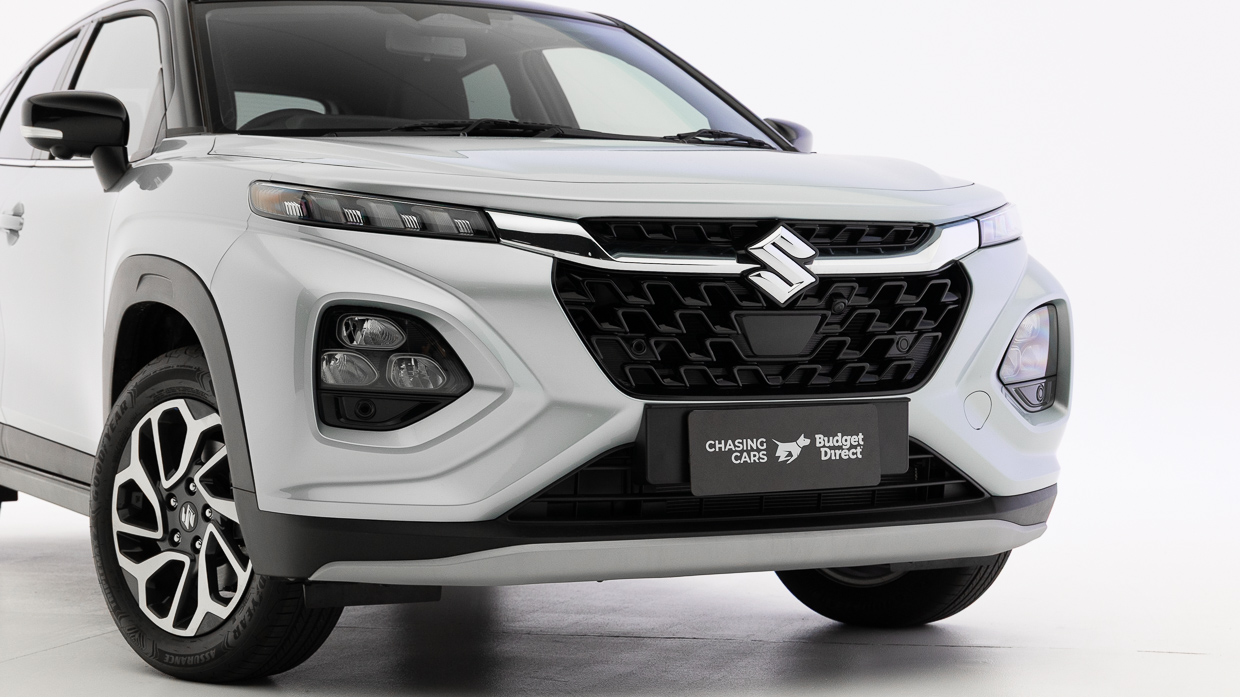
At the time of review, the likes of petrol Chery Tiggo 4 ($23,990 d/a) and Mahindra XUV3XO ($23,490 d/a) undercut the Fronx by a significant margin. Elsewhere in its compact segment, Mazda’s CX-3 (from $32,985 before-onroads) and hybrid Toyota Yaris Cross (from $35,770 d/a) want for higher outlay.
Standard features on the Fronx include:
For its single high specification, there are some notable absences from its features list, including auto wipers, sat-nav, electric seat adjustment, rear air vents, rear centre arm rest, dual-zone climate and a spare wheel (space saver or otherwise). The likes of the Mahindra 3XO appear opulent by comparison.
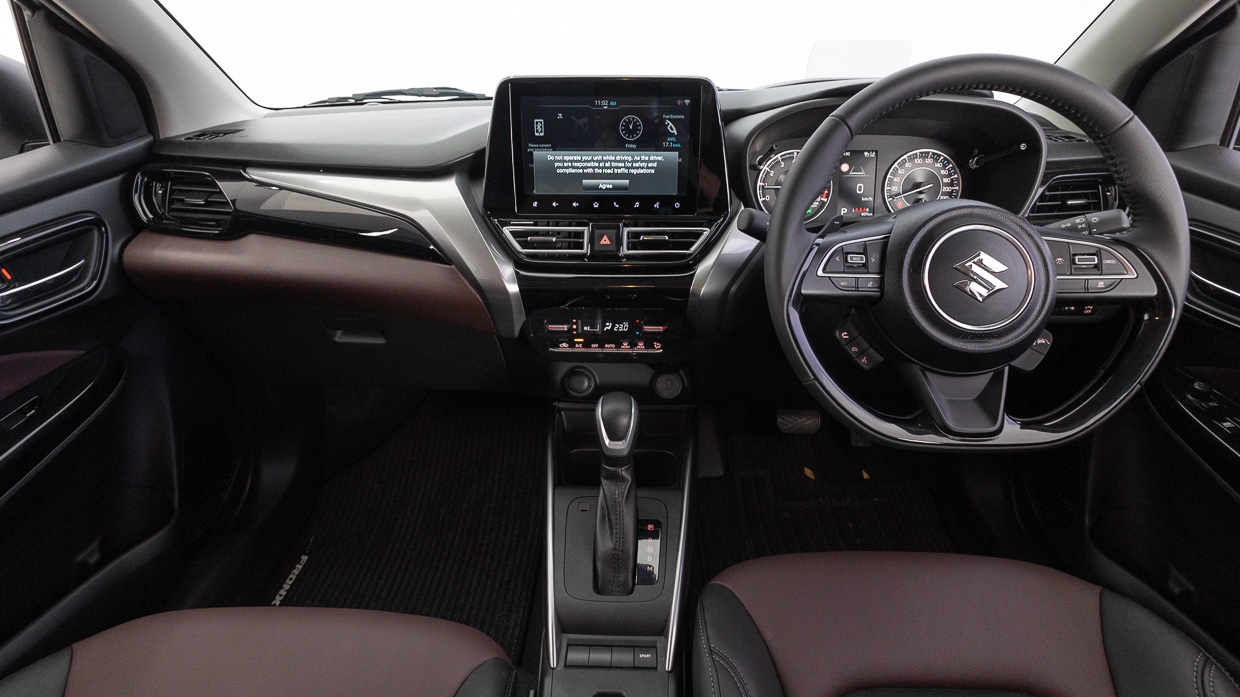
Its circa-$30K price tag also reflects safety and assistance inclusions both required and expected. Features are outlined in the safety subheading below.
Paint colours outside of Arctic White pearl cost an additional $745, while two-tone themes such as our tester’s Splendid Silver Pearl Metallic with Bluish Black Pearl roof want for $1345, which pushes list pricing beyond $30K.
The term Hybrid is writ large on Fronx branding but, of course, not all hybrids are created equal.
So it’s a self-charging mild hybrid design – that is, some electric assistance to primary internal combustion drive – rather than a regular (so-called ‘strong’) series-parallel hybrid design you’ll find in Yaris Cross, for example.
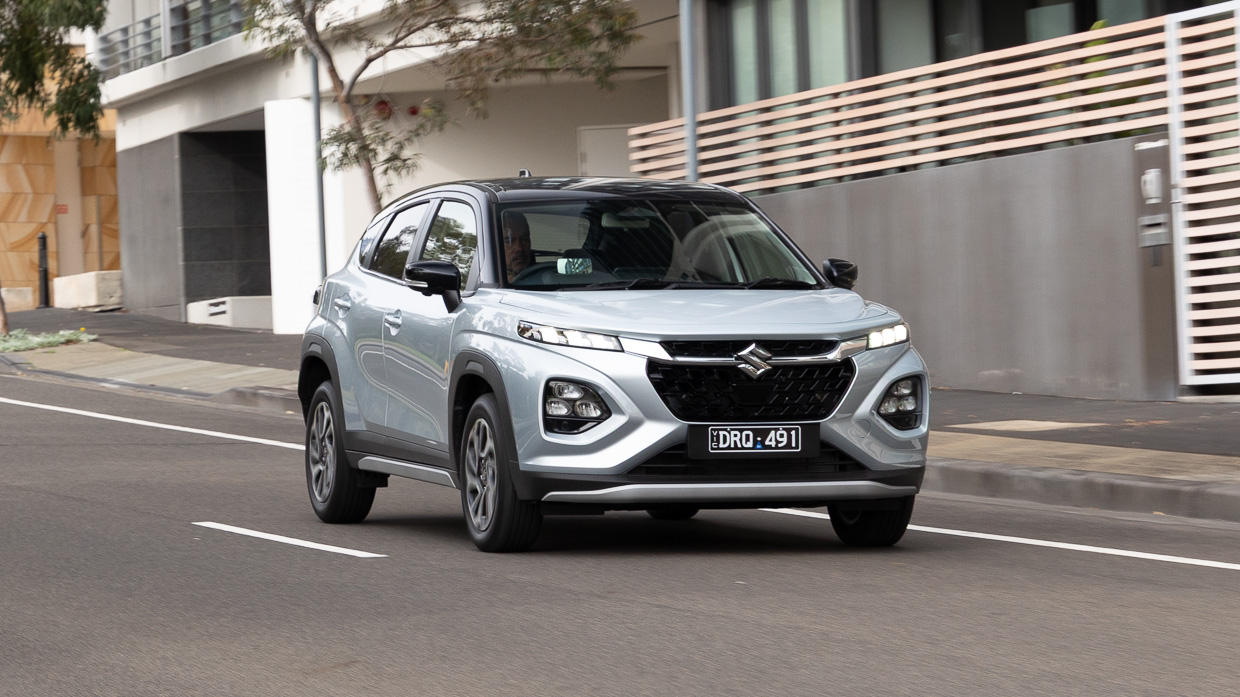
Further, it’s a modest low-voltage (12 volt) design rather than what is now 48-volt convention, which saves on cost, complexity and weight, if also lacks much in the way of oomph.
Unlike regular hybrids, the Fronx never drives on electric power alone. Instead, its aforementioned electric ISG serves to fill in the holes in torque present in the modest 1.5-litre non-turbo petrol engine.
Characteristically, you expect electric drive assistance to yield thrust and refinement. Neither are particularly evident.
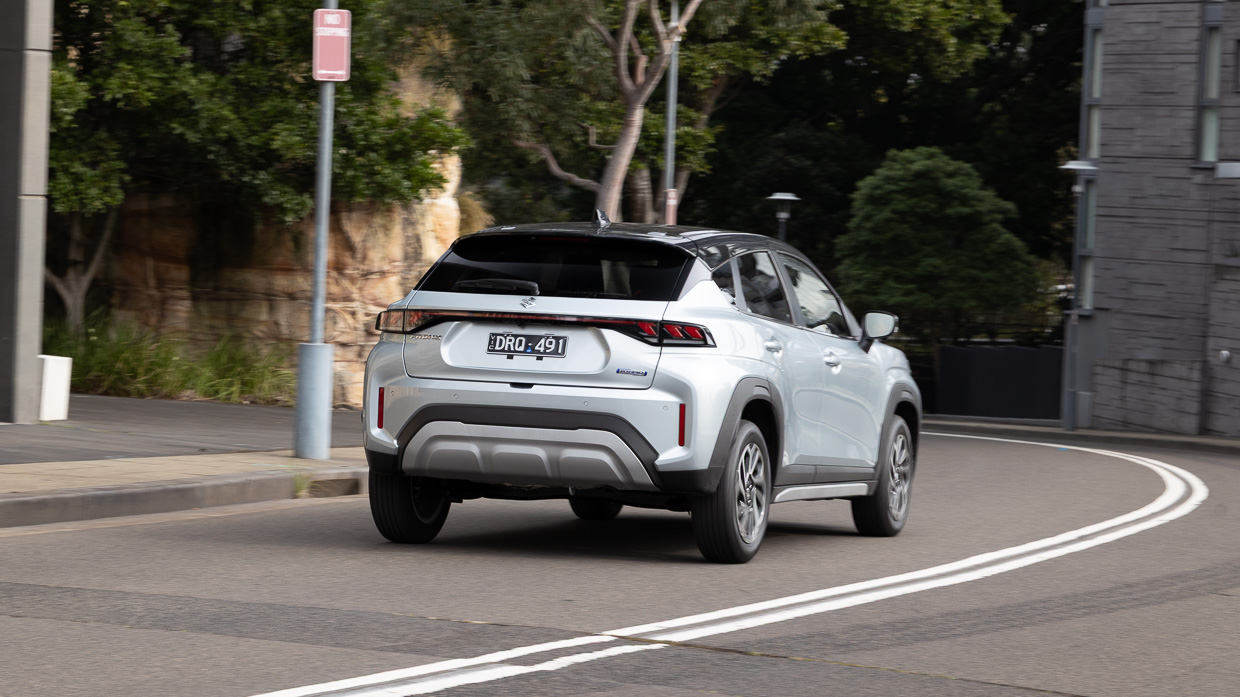
That’s because the powertrain’s 76kW and 137Nm are modest by any measure, though at just over a tonne of kerb weight there’s not much of the Fronx to propel along. And yet, the engine barks its gruff bark almost any time you even think about flexing your right foot.
In Eco mode, response is lazy and elastic. There’s little mid-range tractability, so the engine’s revs are constantly soaring in the pursuit of decent forward progress.
Activating Sport mode simply brings a more lightswitch response to the throttle – and wheelspin in the wet – that gives way to a similar, languid mid-range once you’re on the move.
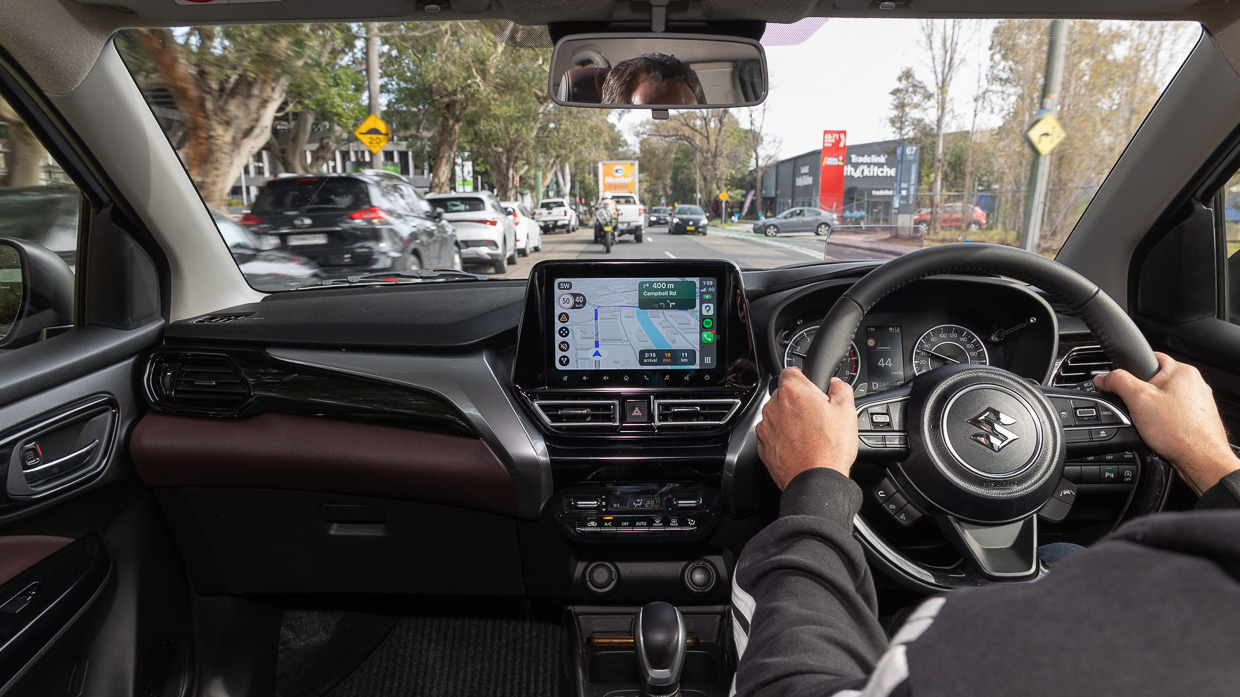
The Fronx can drum up a loud head of unpleasant steam, but more of an issue is the inconsistency with which the six-speed torque converter automatic transmits the engine delivery into forward motion.
On a constant throttle, it will upshift early and drop rpm too low – a fuel saving calibration, no doubt – which, again, entices the driver to give it more berries to keep things moving.
Despite having to punish the engine – and your ears – regularly, the Fronx remains quite frugal. Driven gently, it meets its five-litre per hundred claim. Driven normally (that is, harder) it might creep up to low sevens at worst.
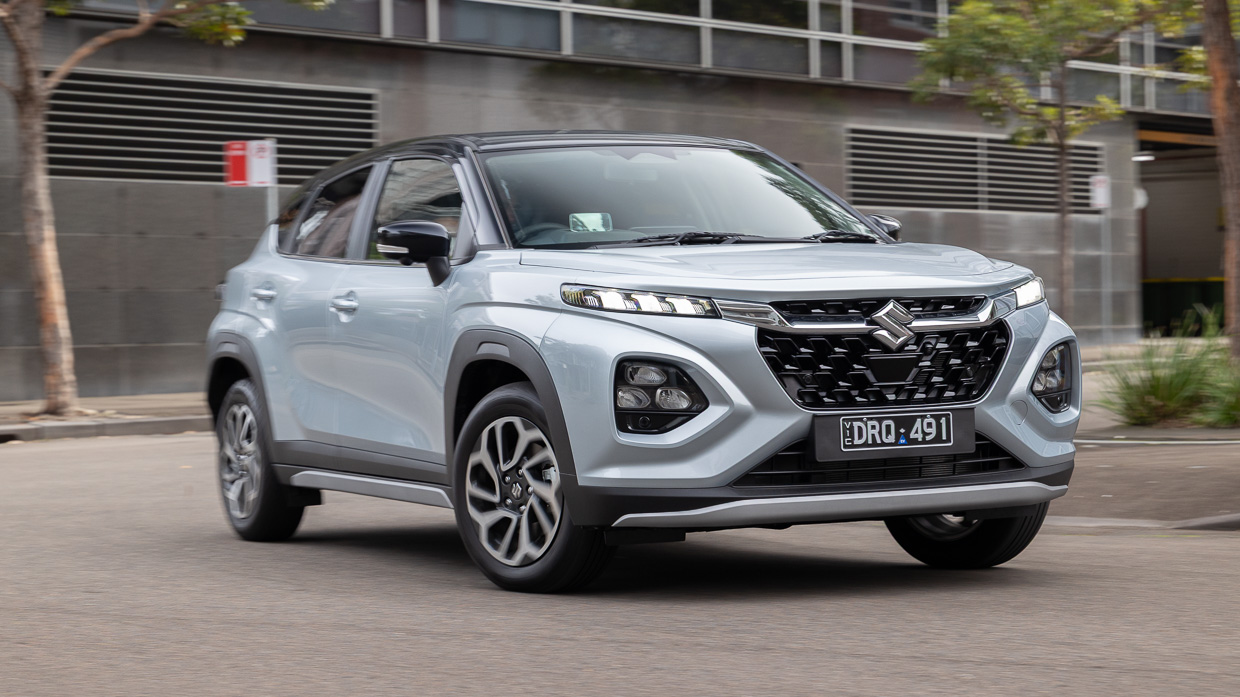
For all of this, there is some underpinning enjoyment due to the sheer light weight of the thing. It’s easy to fling about the urban jungle and, once you get it onto a twisty backroad, it’s surprisingly fluid and responsive to enthusiastic driving.
However, it’s no sports car in crossover disguise. The steering is very light if somewhat inert around the centre and, like other Suzukis past, lacks much self centring effect.
And it’s only ‘dynamic’ if you’re holding back on the reins, because those petite 16-inch tyres simply lack much in the way of lateral grip.
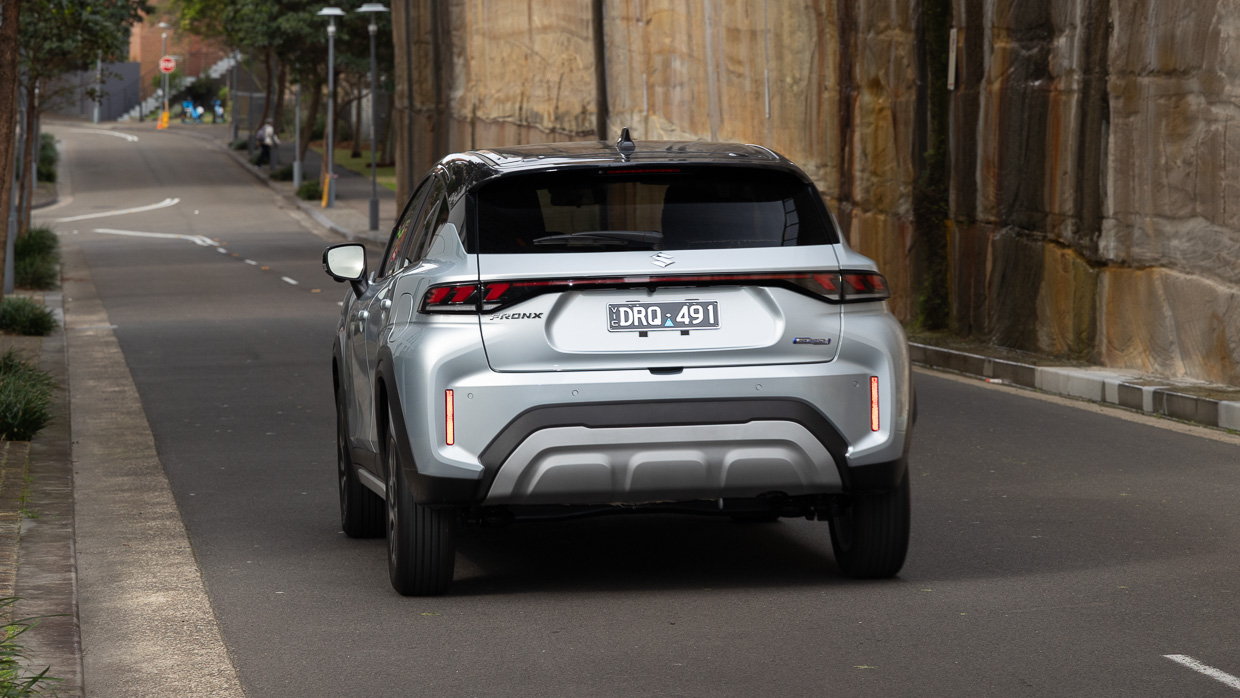
It’s because of this that the Fronx comes across as overly stiffly damped: it rides like a sports car even if it doesn’t have the capabilities to drive and corner like one.
On the move, it’s reasonably settled, but at urban speeds the ride is quite sharp and sometimes jarring, particularly around typically crook Sydney streets.
It’s loud elsewhere, too. Driven through the Sydney tunnel network, a clear lack of structural sound suppression conspired to produce a din of white noise through the cabin. It also rustles up plenty of road noise from the tyres thrumming across the road surface below.
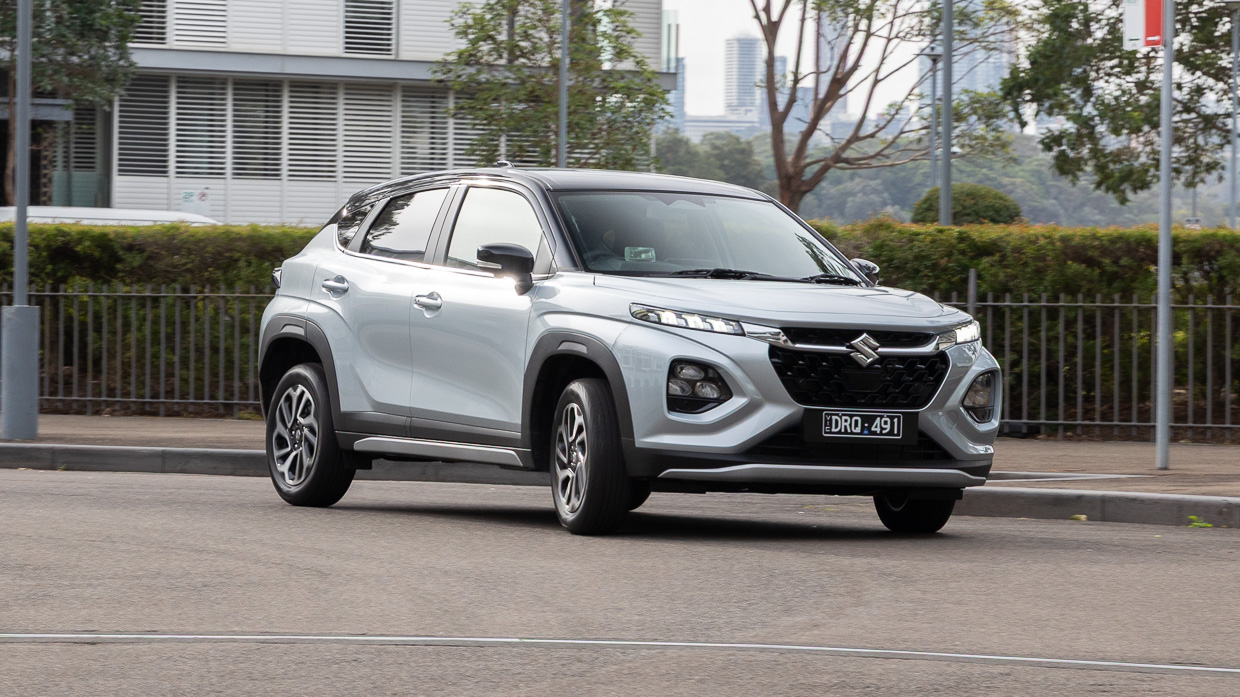
What’s not annoying is the driver assistance suite.
The features are listed below, and there’s really nothing in the way of annoyance that creeps into daily driving that forces you to dive for any one of its dedicated ‘off’ buttons, most of which are located on the dash fascia and the steering wheel.
As a somewhat dependable, fuster-free turnkey experience, the Fronx ticks the right boxes. But nor does it bring all that much joy to the driving experience, no matter how it’s driven.
In contrast to the slew of conspicuously clean and modern interior designs cropping up in even at the affordable end of the motoring landscape, the Indian-sourced Fronx feels downright retro inside.
Materials, look, design – it could be any interior from any Suzuki model of the past 15 years…save, perhaps, for the wireless phone mirroring and inductive phone charging.
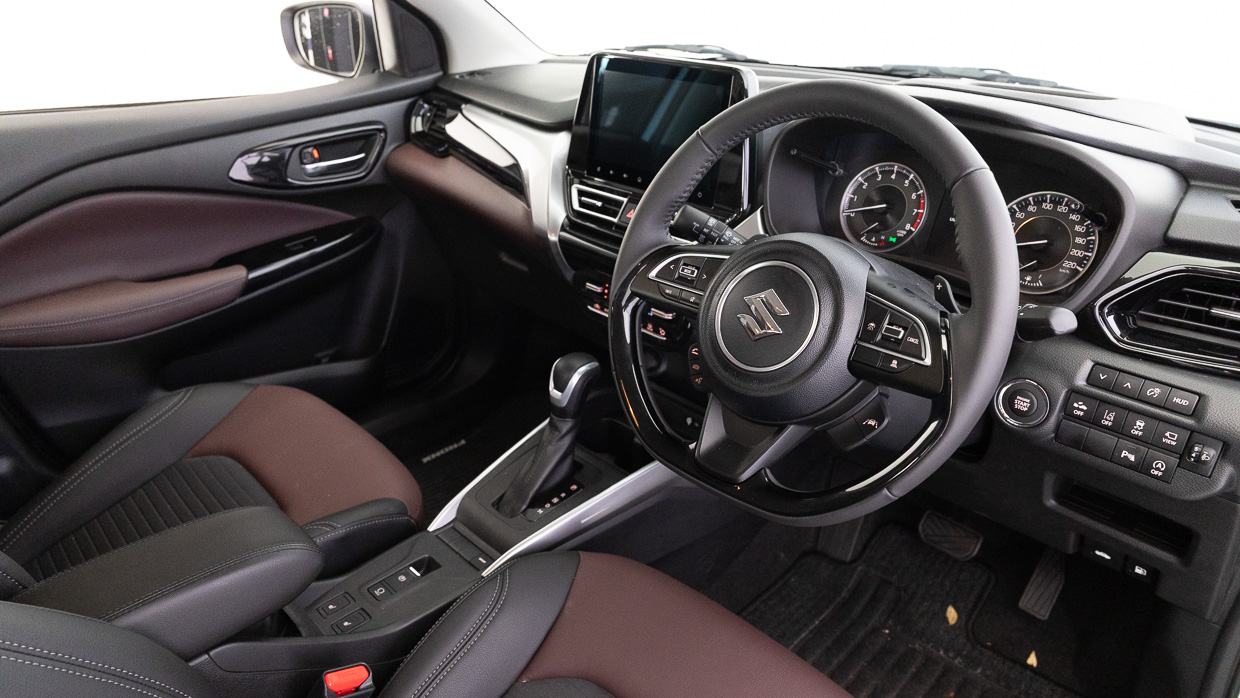
Minted in a fetching blend of deep plum ‘Bordeaux’ and dark grey, the Fronx uses silver highlights integrated into an angular cabin theme minted almost wholly in shiny hard plastics and high-gloss finished surfaces. Upmarket it most certainly is not.
There is some relief in its almost utilitarian nature in the impressively supple leather-appointed seat trim, with neat double-stitching mirrored in the vinyl armrests that lack soft-touch padding.
The seats themselves, with their sporty looks and chunky bolsters, are quite comfy and supportive, but even the inclusion of electric heating can’t mask their cheap, mechanically adjustable nature – the passenger side doesn’t even get height adjustment.
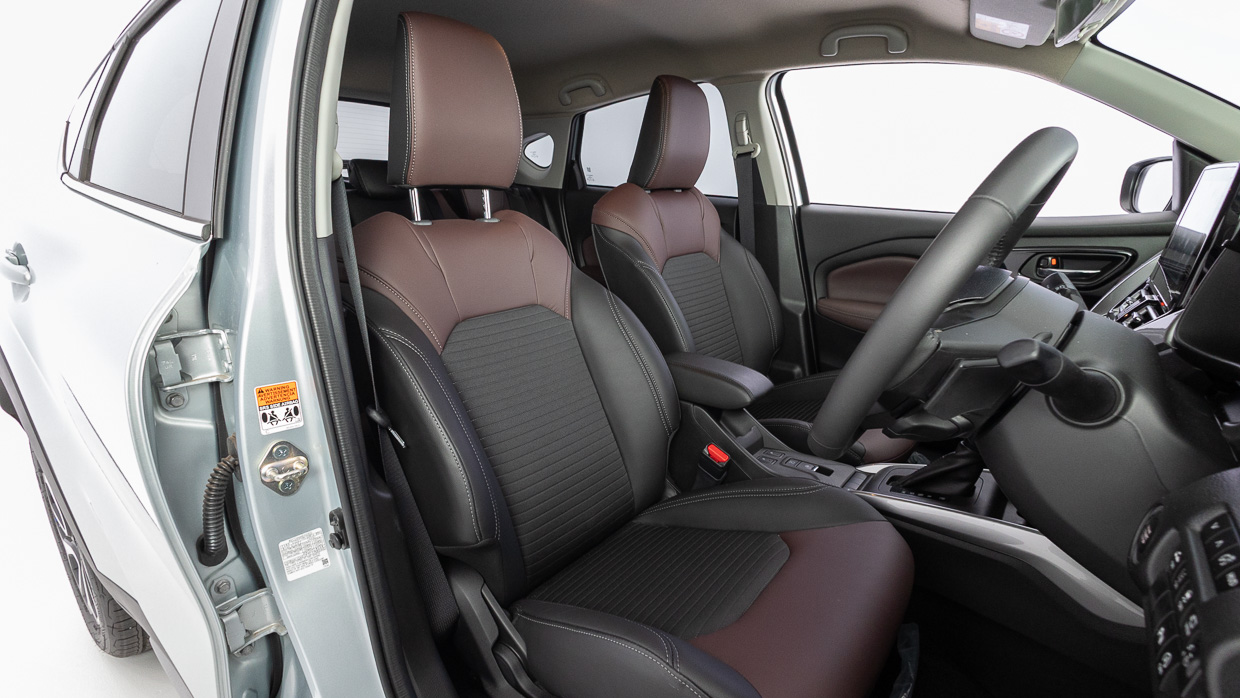
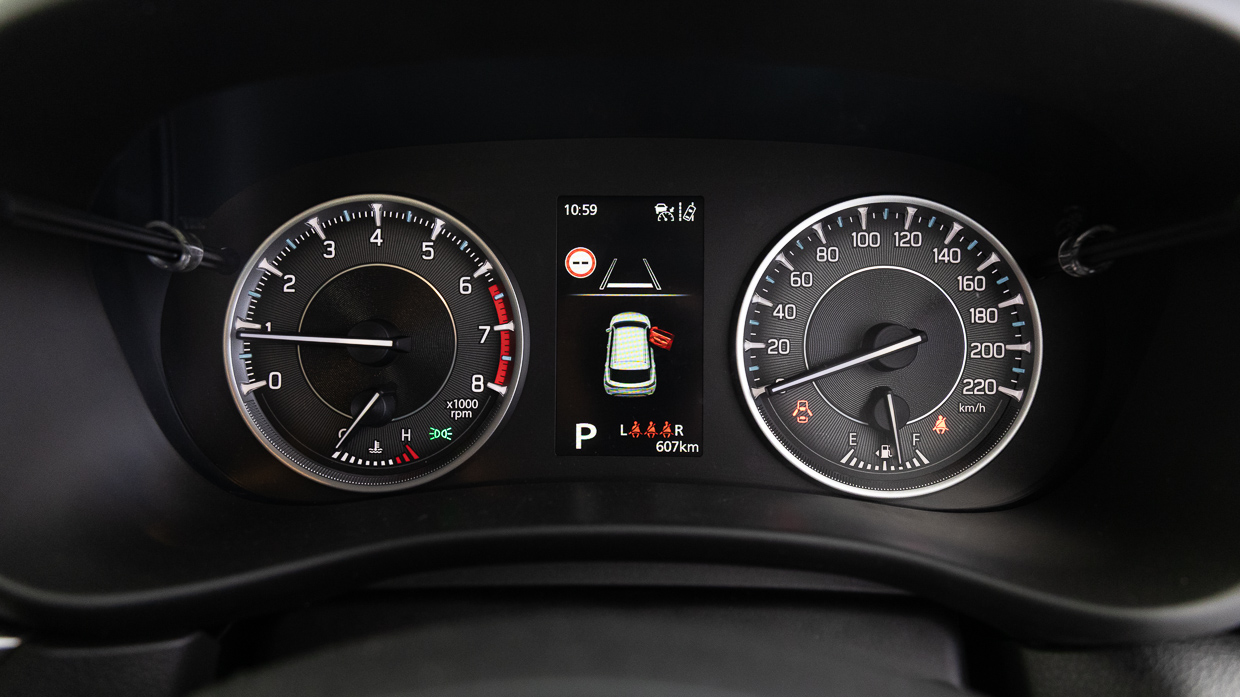
Then there’s the wheel, a combination of slippery, shiny leather and hard glossy plastic that, again, looks lifted from another decade-old Suzuki model. It features (largely pointless) paddleshifters and a selection of handy control buttons and switches.
Instruments are analogue, with a rudimentary central digital screen that can be configured to provide a third speedometer(!) if you count the roundel dials and the thin, plastic head-up display, which is at least full colour.
Thankfully, there are plenty of shortcut buttons abound to adjust driver assistance systems, stop-start, and whatnot…
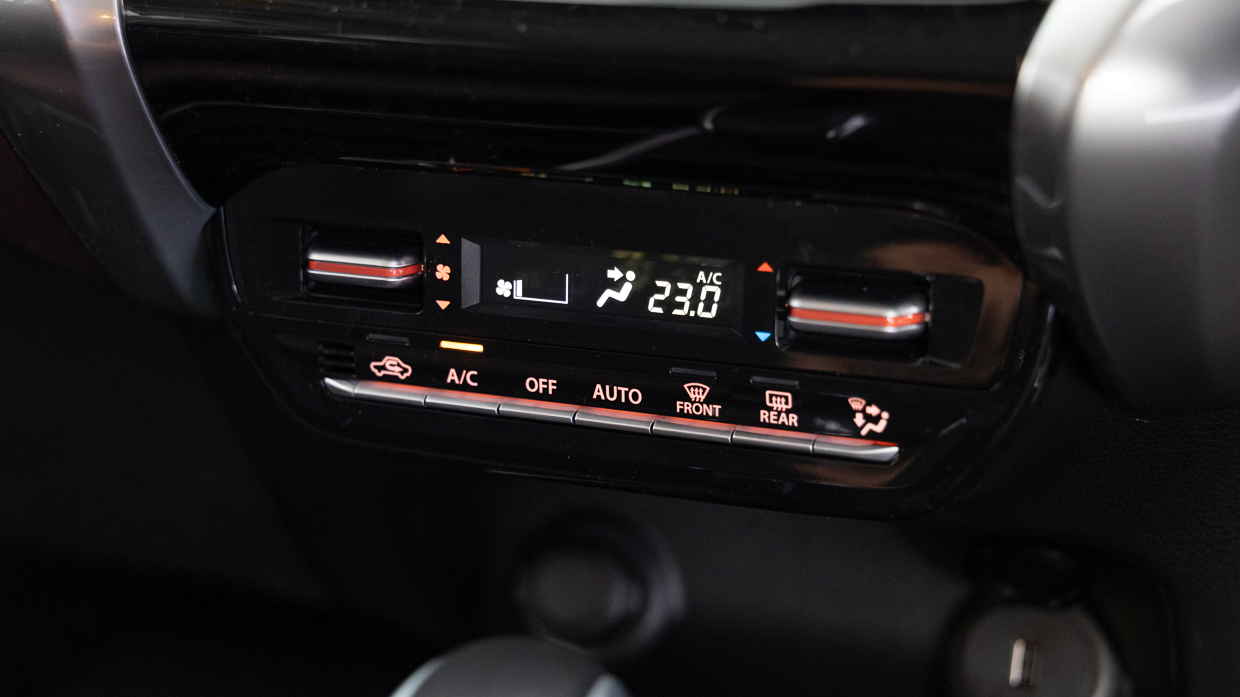
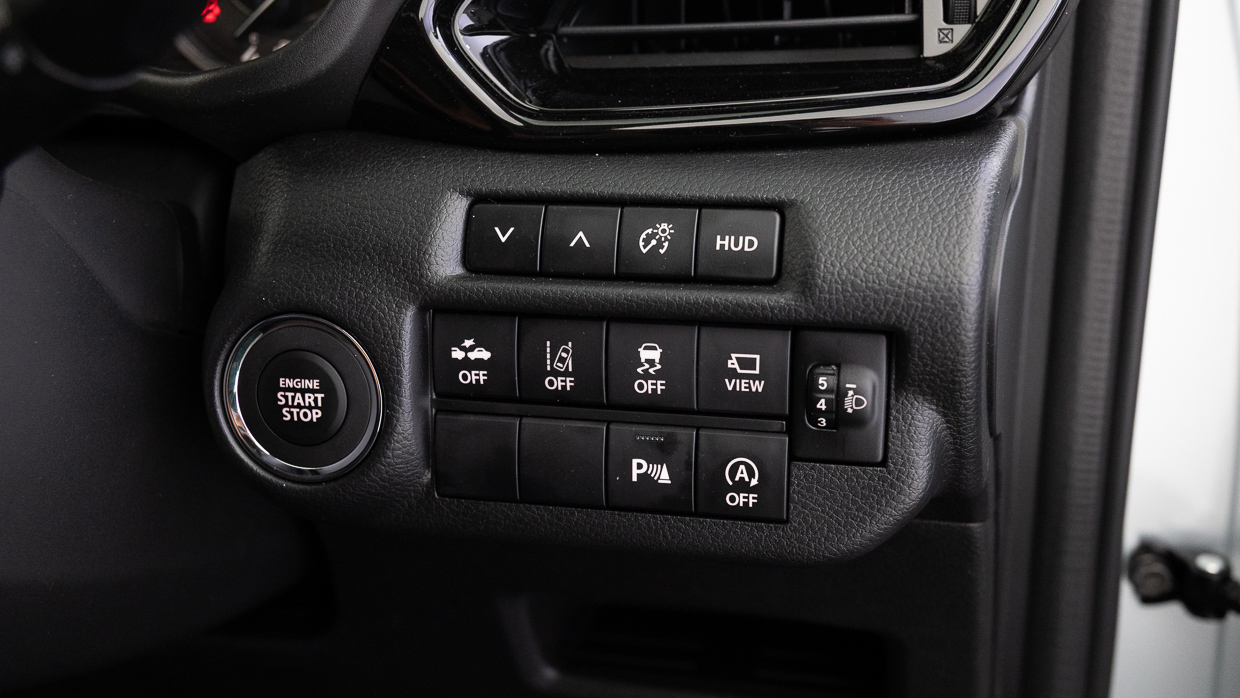
From its array of button blanks on the centre console (to remind you of missing features) to the sharp edges of the door bin moulding, the Fronx doesn’t stand up to close inspection and seems built to a cost.
Ditto the very flimsy console lid, the lifts to reveal a tiny cubby – boot holders in the doors apart, storage to not a strong suit here…
It’s just very basic. The single-zone climate control struggles to maintain a consistently cool or warm set temperature and the media system is, by 2025 standard, make-do: old graphics, tardy in process speed, lacking high-spec features such as proprietary sat-nav.
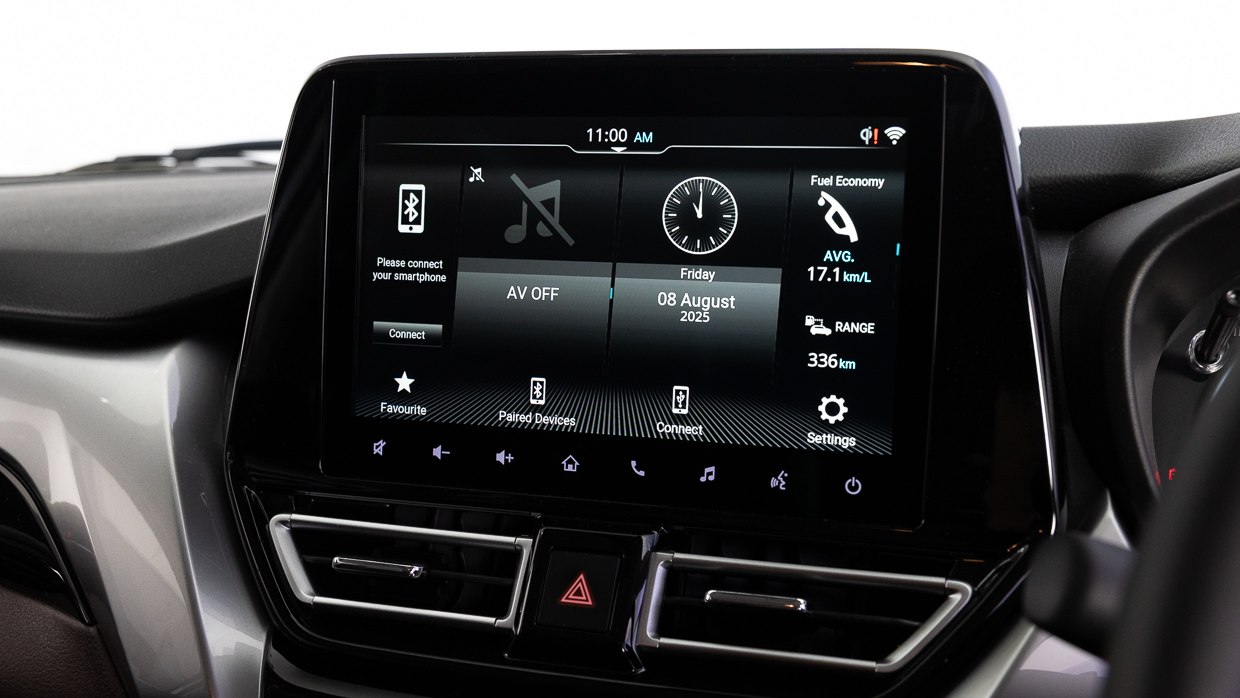
It annoyingly prompts for a user safety acknowledgment at every start up and while it presents a nifty 360-degree virtual fly-around of the car every restart, the camera system itself offers rudimentary resolution and clarity.
Typical of a compact segment crossover, row two is only commodious enough for two adults, with limited knee room and only just enough headroom for 180cm rear occupants.
There is, strangely, a tailshaft tunnel which limits available foot room.
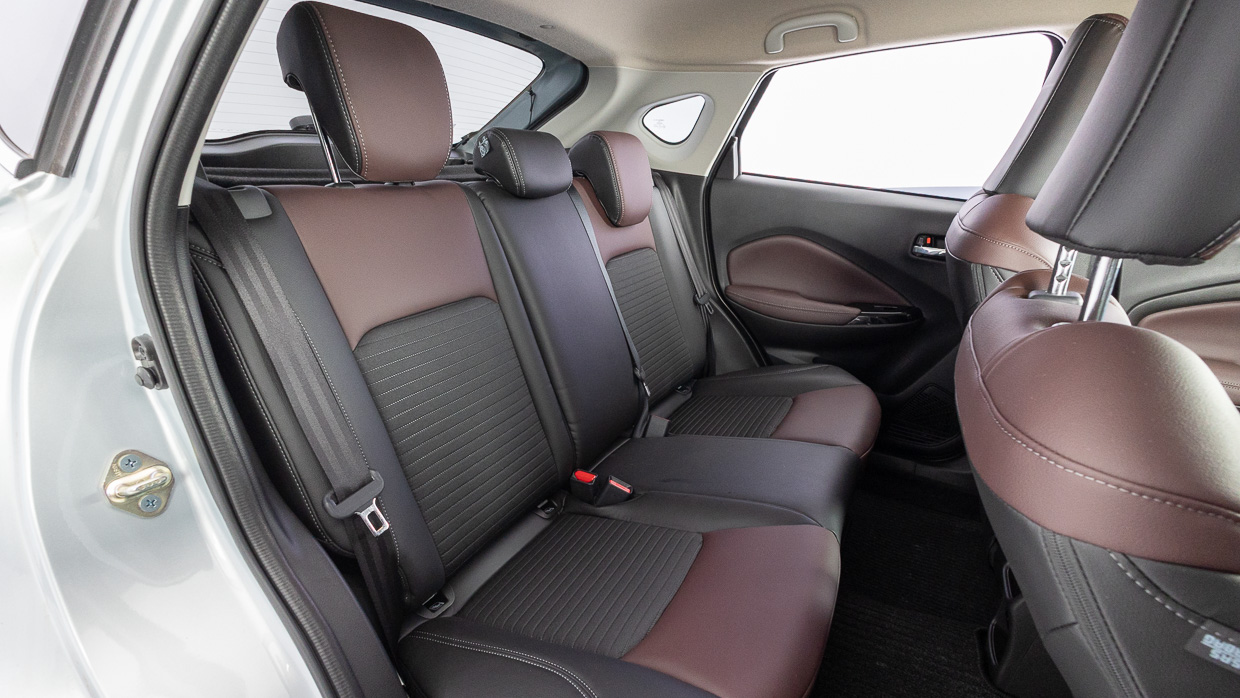
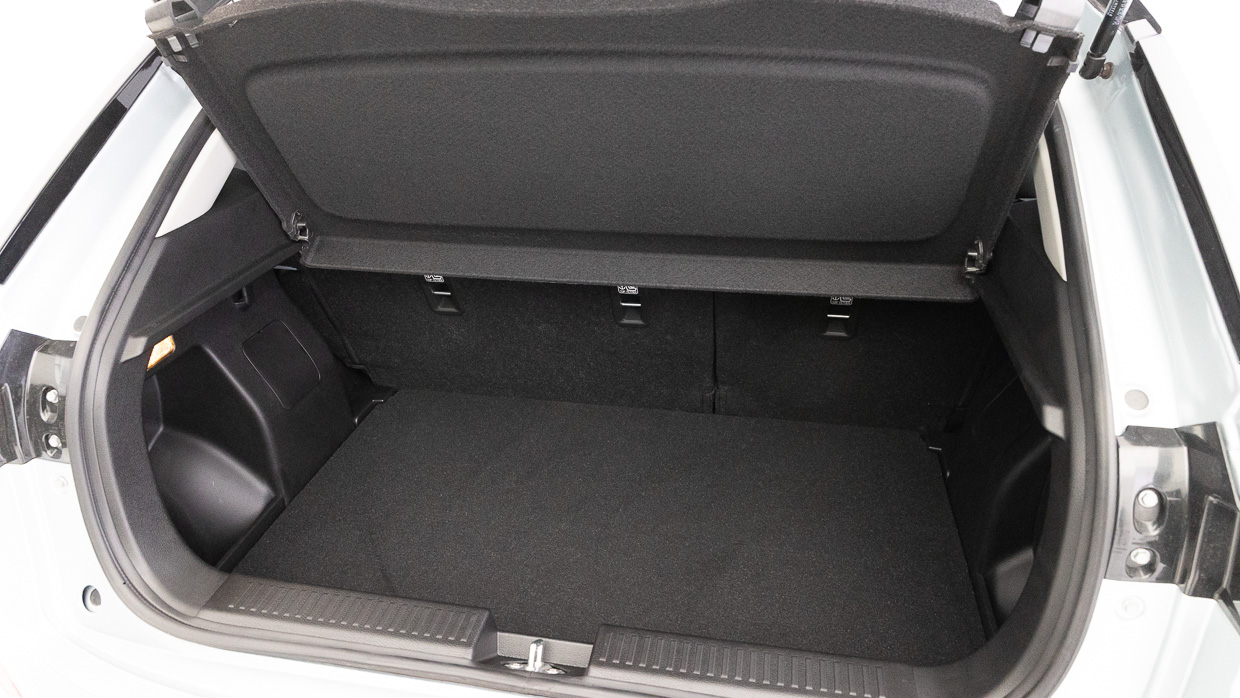
Like the front row, the rear accom is very basic: single USB-A and USB-C outlets, no rear air vents and no fold-down arm rest. The door bins, too, are tiny. But the bench itself brings decent comfort and you do get map pockets.
The second row offers a 60:40 split seatback to liberate more space than its regular 304-litre capacity, which can be tweaked to taste thanks to a dual-level boot floor.
On that, there’s more than ample space for a space-saver – or even a full-size – spare under the floor, though Suzuki has chosen instead to leave out a space wheel and to merely fit a tyre inflation device.
As a newcomer to the Australian line-up, the Fronx offers levels of active safety – specifically vehicle-to-vehicle autonomous emergency braking smarts – that adhere to the ADR 98/00 regulations enforced from March this year that knocked many of its Suzuki stablemates off the importation schedule.
At the time of review, the Fronx is unrated by ANCAP. With its lowly one-star rating for Swift – the brand’s only model currently rated by ANCAP – the safety body’s history with the importer’s vehicles is a bit of a sore point for Suzuki Australia.
Update 22/12/25: ANCAP has confirmed the Fronx has ‘narrowly’ achieved a one-star rating after locally testing the SUV. In addition to offering poor protection for adults and children, ANCAP noted the failure of a rear seatbelt during its full-width frontal crash test. ANCAP has reported the failure to Australian and New Zealand safety regulators.
In light of this news, Chasing Cars has reduced its overall rating from a 6/10 to a 4/10.
Update 23/12/25: Suzuki Australia has released a list of 249 Fronx vehicles potentially affected by the seatbelt failure, and has advised customers to cease using the rear seats immediately. The list can be found here.
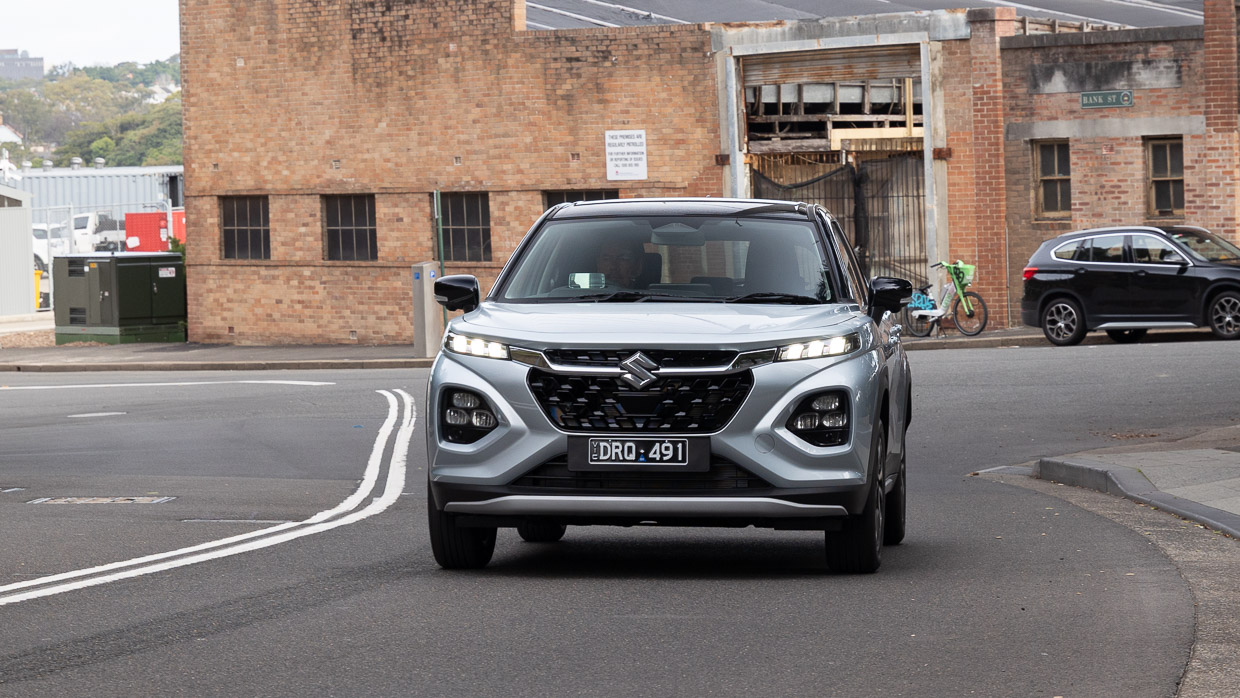
Regardless, the Fronx list of standard safety features includes:
Servicing is required for the Fronx every 12 months or 15,000 kilometres, with the first five services costing $329, $399, $549, $399 and $329, for a five-year/75,000km outlay of $2005.
In comparison, the Toyota Yaris Cross costs $255 per service, or $1275 over five years.
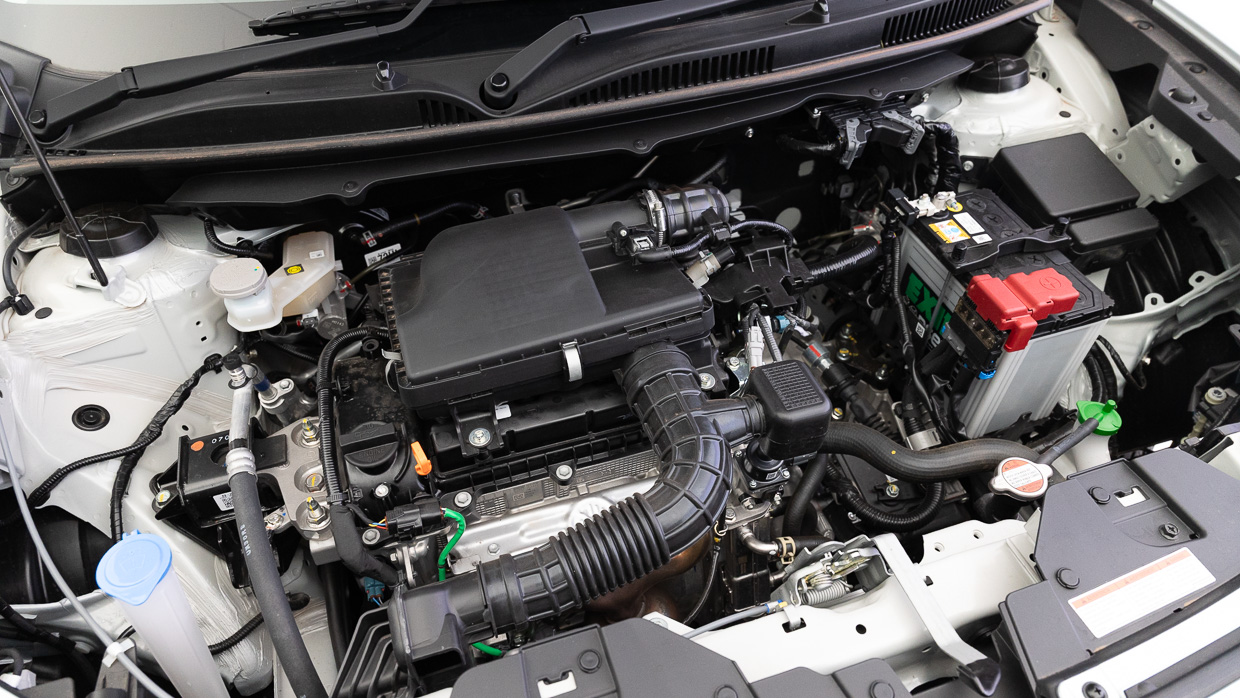
Warranty is Suzuki’s five years of unlimited-kilometre coverage.
Back to questions posed in the introduction. Is it good value? At over $30K list as tested with key omissions in spec, not really.
Fitted items such as front seat heating and a head-up display distract from a lean features list where the likes of Mahindra and Chery piles on much more kit – electric seats, sunroofs – for lower outlay in their competitors.
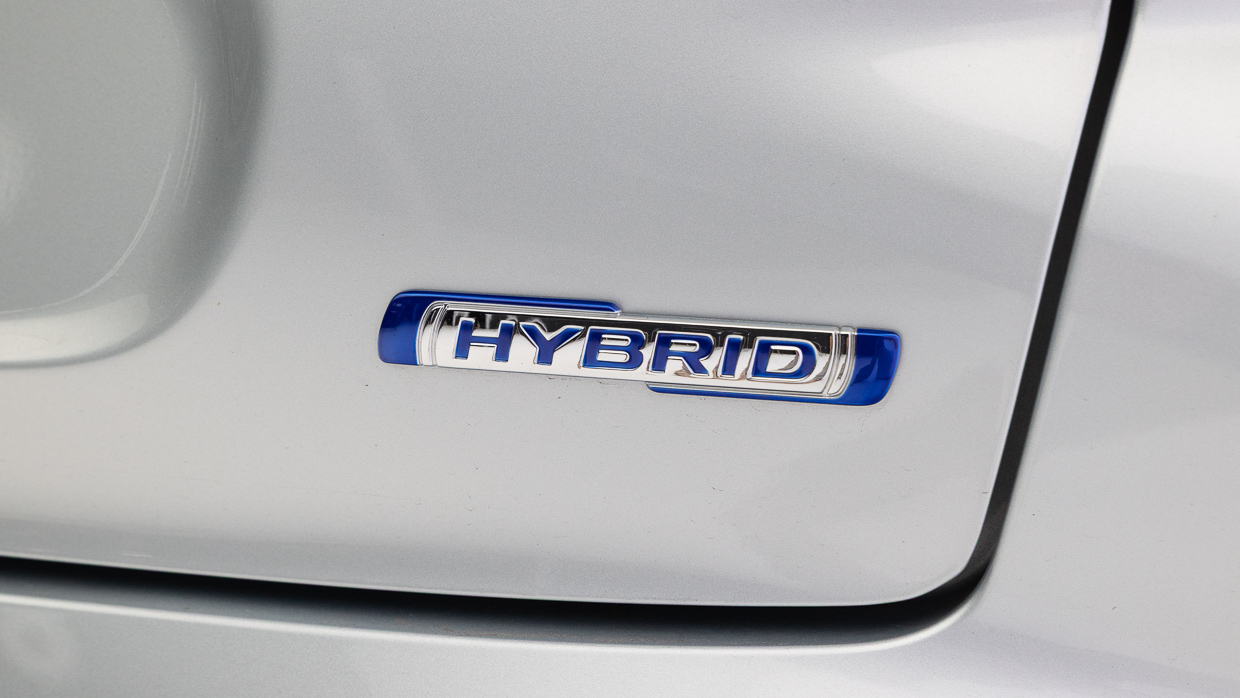
Nor is the value quotient boosted by tech slickness, a proper hybrid drive or tubocharging in core areas that count considerably. And while there’s a certain charm in its older-school schtick, it comes up pretty short on expectations one might have for an ‘all-new, new-genre, hybrid SUV’.
Well packaged and appointed? Packaging is okay, but you’ll find roomier options in its segment, and the balance of the quality of appointment lean harder towards cost consciousness than they do towards a semi-premium experience.
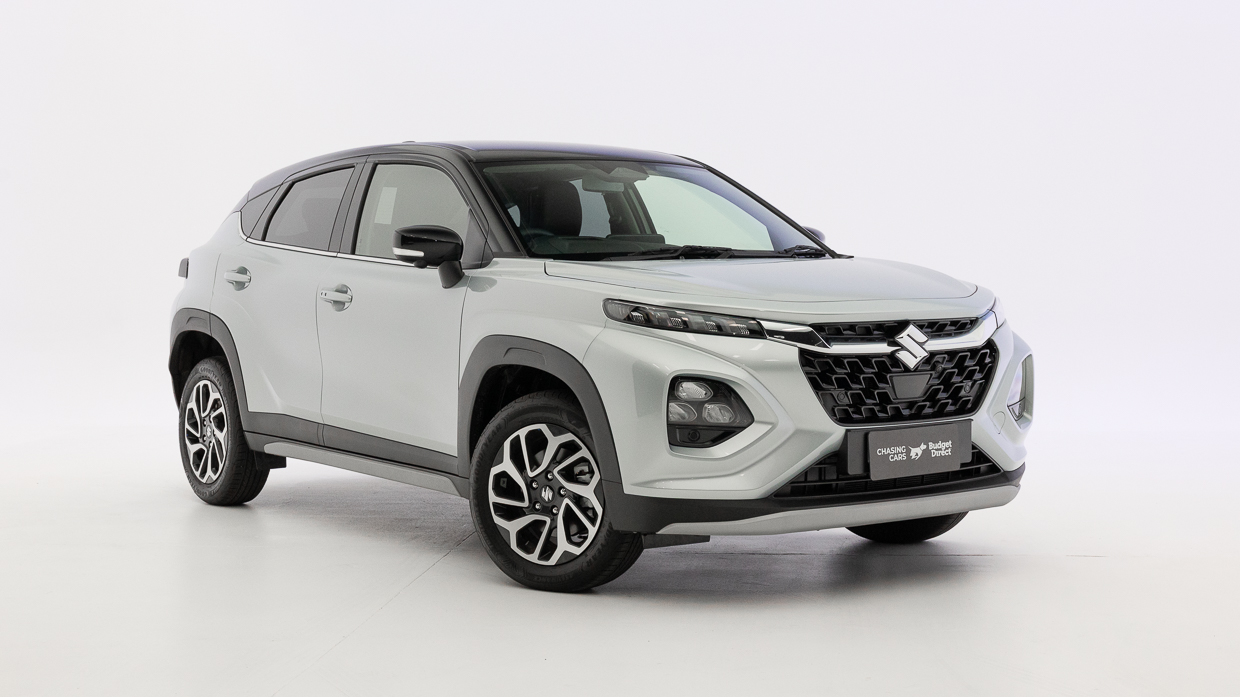
A faithful drive, around town and on the open road? Well, it’s solid, gruff, slow and largely unremarkable, with an absence of spunk and fun factor that Suzuki is renowned for.
The Fronx really should shine brightly enough, and in many areas, for the sort of money it asks for. Or, alternatively, it should be priced sharper for what it is and what it offers.
About Chasing cars
Chasing Cars reviews are 100% independent.
Because we are powered by Budget Direct Insurance, we don’t receive advertising or sales revenue from car manufacturers.
We’re truly independent – giving you Australia’s best car reviews.
The estimate provided does not take into account your personal circumstances but is intended to give a general indication of the cost of insurance, in order to obtain a complete quote, please visit www.budgetdirect.com.au. Estimate includes 15%^ online discount.
^Conditions Apply
Budget Direct Insurance arranged by Auto & General Services Pty Ltd ACN 003 617 909(AGS) AFSL 241 411, for and on behalf of the insurer, Auto & General Insurance Company Limited(ABN 42 111 586 353, AFSL 285 571).Because we don’t know your financial needs, we can’t advise you if this insurance will suit you. You should consider your needs and the Product Disclosure Statement before making a decision to buy insurance. Terms and conditions apply.
Indicative quote based on assumptions including postcode , 40 year old male with no offences, licence suspensions or claims in the last 5 years, a NCD Rating 1 and no younger drivers listed. White car, driven up to 10,000kms a year, unfinanced, with no modifications, factory options and/or non-standard accessories, private use only and garaged at night.
^Online Discounts Terms & Conditions
1. Discounts apply to the premium paid for a new Budget Direct Gold Comprehensive Car Insurance, Third Party Property Only or Third Party Property, Fire & Theft Insurance policy initiated online on or after 29 March 2017. Discounts do not apply to optional Roadside Assistance.
2. Discounts do not apply to any renewal offer of insurance.
3. Discounts only apply to the insurance portion of the premium. Discounts are applied before government charges, taxes, levies and fees, including instalment processing fees (as applicable). The full extent of discounts may therefore be impacted.
4. We reserve the right to change the offer without notice.